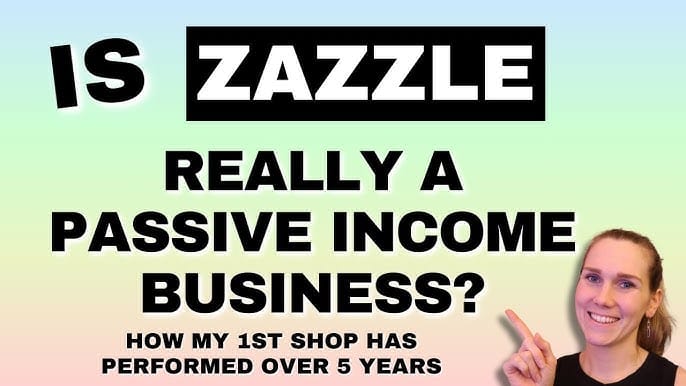In the modern world, the figure “1M” (1 million) is a universal benchmark used across various fields, from business to technology to marketing. Whether it’s 1 million dollars in revenue, 1 million followers on social media, or 1 million users on an app, this milestone has significant implications. Understanding how “1M” impacts various industries and why it’s such a powerful metric can help businesses, startups, and individuals leverage this milestone for growth. In this article, we will explore the concept of “1M” and its importance in multiple industries.
The Concept of “1M” – A General Overview
The term “1M” refers to one million, a unit that signifies a large, often impressive figure. It is used widely across various sectors to represent milestones and goals, including business, economics, and even technology. In the business world, “1M” can refer to revenue, users, customers, or market capitalization. In terms of physical measurements, “1M” often represents 1 meter or a similar unit. Understanding the flexibility of this concept is key to seeing how businesses and individuals utilize it to measure progress.
“1M” serves as a metric of success and growth. It’s a significant milestone that businesses and individuals strive to reach, marking an achievement that indicates high performance or large-scale impact. For example, when a company reaches $1 million in revenue, it often symbolizes credibility, attracting investors, or unlocking new business opportunities. Similarly, 1 million followers on a social media platform can indicate that the content resonates with a large audience, building trust and fostering a loyal community. The universality of “1M” across multiple fields makes it a vital metric for measuring success and advancement.
The Role of “1M” in Business and Economics
In business and economics, hitting the “1M” mark is often seen as a significant achievement, representing growth, stability, and success. Reaching 1 million dollars in revenue or market capitalization is typically a milestone that reflects strong operational performance. Many startups and small businesses use “1M” as a goal to reach within a specific time frame, such as generating $1M in revenue within their first year of operation. This goal is vital because it shows the business’s potential for scaling and profitability.
For businesses, the “1M” threshold is not only a marker of success but also a signal to investors. Reaching 1 million dollars in funding, for example, can open doors to additional rounds of funding or a more favorable valuation. Many entrepreneurs find that hitting the “1M” mark provides credibility and attracts investors who are more willing to take calculated risks on a company with a proven track record. It can also help a company gain traction in the market, securing more clients, customers, and partners. From a financial perspective, reaching “1M” is an indicator of economic growth, increased cash flow, and more substantial market influence.
“1M” in Technology and Innovation

Technology has made “1M” an even more critical milestone. In tech startups, hitting 1 million users or app downloads is often seen as a sign of success and market validation. For example, many app developers aim to reach 1 million downloads in the early stages of their business to prove that their product has mass appeal and is scalable. Reaching “1M” in terms of users or downloads can also help attract investment from venture capitalists who look for high growth potential in the tech sector.
“1M” is also used as a benchmark for data storage, processing power, and other technological measures. For instance, large-scale cloud computing platforms often discuss storage in terms of “1M” units (e.g., 1 million terabytes), making the scale of their infrastructure easier to understand. When it comes to tech companies, this milestone is not only symbolic of growth but also an indicator of technological advancement and operational efficiency. For tech startups, reaching “1M” can be the key to entering the next phase of development, allowing them to scale their operations and attract more users or customers.
The Importance of “1M” in Marketing and Social Media
In the world of marketing and social media, “1M” is often the ultimate benchmark for success. Achieving 1 million followers on platforms like Instagram, Twitter, or YouTube is a goal for many influencers, content creators, and brands. Reaching “1M” followers can significantly boost a brand’s visibility and credibility, establishing it as a leading player in its industry. Social media influencers who hit 1M followers typically experience a surge in partnership opportunities with brands looking to promote their products to a large, engaged audience.
In terms of digital marketing, the “1M” milestone holds even more weight. Reaching 1 million views on a video or post signals to marketers that their content resonates with a wide audience. This achievement can increase engagement, brand awareness, and customer trust, driving sales and promoting brand loyalty. From a business perspective, “1M” views or followers on social media can translate into increased revenue streams, as companies can monetize their reach through ads, partnerships, and product endorsements. Social media influencers who hit this mark often secure sponsorship deals, exclusive content opportunities, and long-term partnerships with major brands.
Real-Life Examples and Impact of “1M” Milestones

Numerous success stories illustrate the power and impact of the “1M” milestone. For example, when the messaging app WhatsApp reached 1 million users in its early stages, it demonstrated a rapidly growing user base and the potential for scalability. This early milestone was a signal to investors that the platform had the capacity for exponential growth. Similarly, when the social media platform TikTok achieved 1 million downloads in a matter of months, it indicated the app’s widespread appeal and paved the way for its global success.
Additionally, crowdfunding platforms like Kickstarter have seen projects reach the $1 million funding mark, demonstrating the potential of these platforms for new startups and entrepreneurs. Reaching “1M” in crowdfunding can validate an idea and provide the necessary capital for development, allowing creators to bring their products to market. These milestones also show how global audiences are increasingly willing to invest in new ideas, products, and services that align with their values and interests.
Conclusion
The “1M” mark is more than just a number. It is a symbol of success, growth, and market validation across various industries, from business and economics to technology and marketing. Whether you are a startup founder, an influencer, or a tech developer, hitting “1M” can signify that you’ve reached an important milestone in your journey toward greater success. Achieving this milestone opens up new opportunities for scaling, partnerships, and credibility, offering long-term advantages that can propel you to even greater heights.
FAQs
What does “1M” mean in the context of business?
In business, “1M” typically refers to achieving $1 million in revenue, market capitalization, or funding. It represents a major milestone that signals growth and financial success.
How does hitting “1M” in revenue affect a company’s market value?
Reaching $1 million in revenue can increase a company’s market value, attracting investors and partners who see the business as scalable and profitable.
Why is “1M” important in social media marketing?
Hitting 1 million followers or views signifies widespread appeal and engagement, leading to increased brand awareness, trust, and potential revenue.
How does the concept of “1M” apply to technology startups?
For tech startups, 1 million users or app downloads indicate product-market fit and scalability, making it a critical milestone for growth and attracting investors.
Can reaching 1 million users guarantee a product’s success?
While it’s not a guarantee, reaching 1 million users signals that the product is well-received and has the potential for further growth.
What are the most significant challenges faced when a company reaches “1M” in users or revenue?
Challenges include scaling operations, maintaining quality, and managing increased demand without compromising customer satisfaction.
How do businesses and organizations measure “1M” milestones effectively?
Businesses use key performance indicators (KPIs), financial reports, and growth metrics to measure when they’ve reached 1 million in revenue, customers, or other significant areas.










